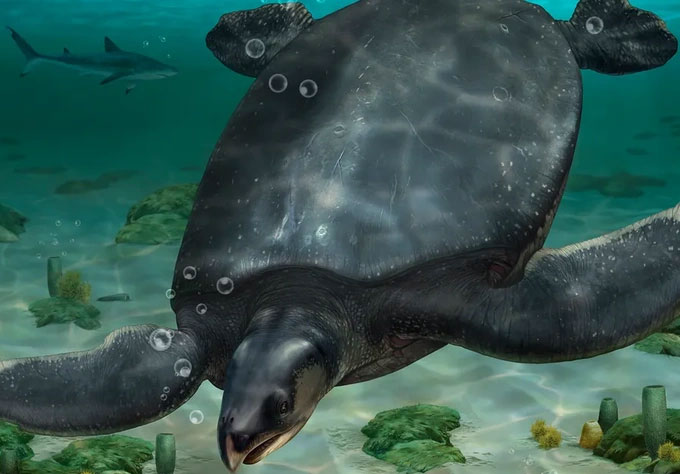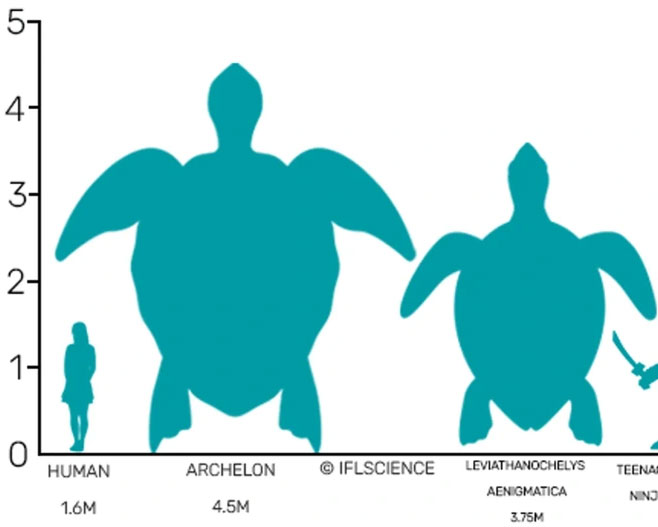A specimen of one of the largest turtles ever known, measuring nearly 4 meters, has been discovered in the waters off Spain.
Recently, archaeologists uncovered a specimen of Archelon – an extinct ancient turtle that lived around the late Cretaceous period, approximately 66 million years ago.

The ancient giant turtle was as large as a rhinoceros and went extinct 66 million years ago. (Photo: Iflscience).
This species is recorded as one of the largest turtles ever known on Earth, scientifically named Leviathanochelys aenigmatica. The term “leviathan” refers to a sea monster from the Bible, which was used to name this sea turtle due to its enormous size.
According to research records, the Archelon specimen reveals that it could reach lengths of nearly 4 meters, equivalent to the size of a rhinoceros. The specimen was recovered from the Cal Torrades area, located in northeastern Spain. It is believed to have been submerged underwater for about 80 million years.
In addition to its astonishing size, researchers also discovered numerous anatomical features located on the pelvis and shell of the specimen, which surprised them. Some even speculated that they might be examining a new species, and possibly a new group of turtles.

Size comparison of the ancient turtle Archelon with a human. (Photo: Iflscience).
The enormous size of this turtle species is an example of convergent evolution. In fact, similar traits have been found in giant turtle species that exist in North and South America.
According to the authors of the study, the discovery of the world’s largest sea turtle specimen has shed light on the diversity of sea turtles and the evolutionary trend towards “gigantism” that has occurred in sea turtle groups, particularly in Europe during the Cretaceous period.
















































